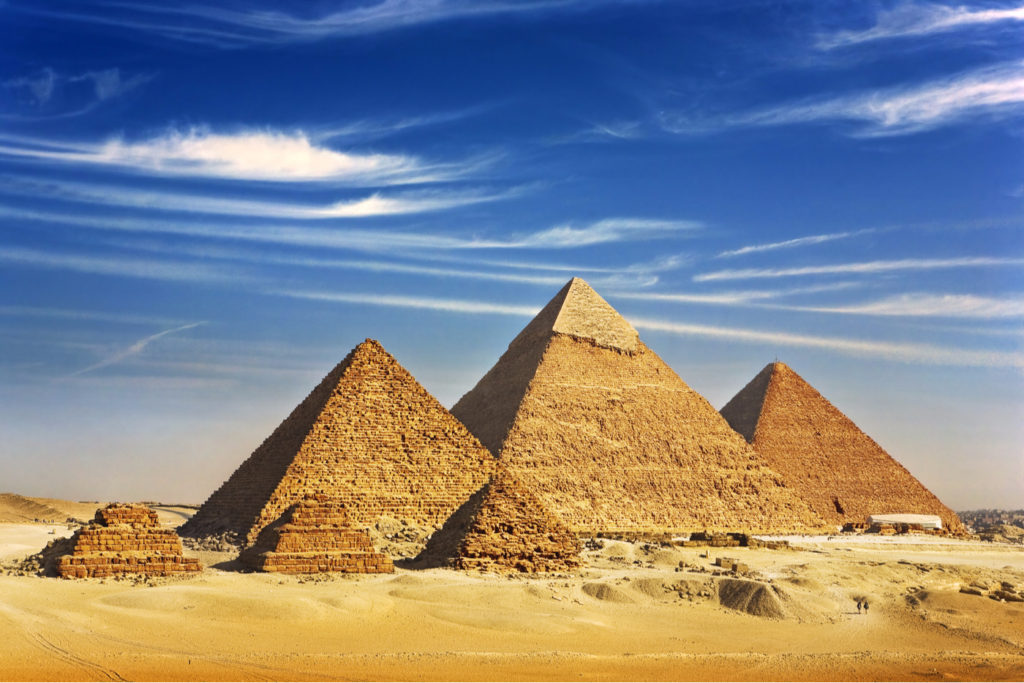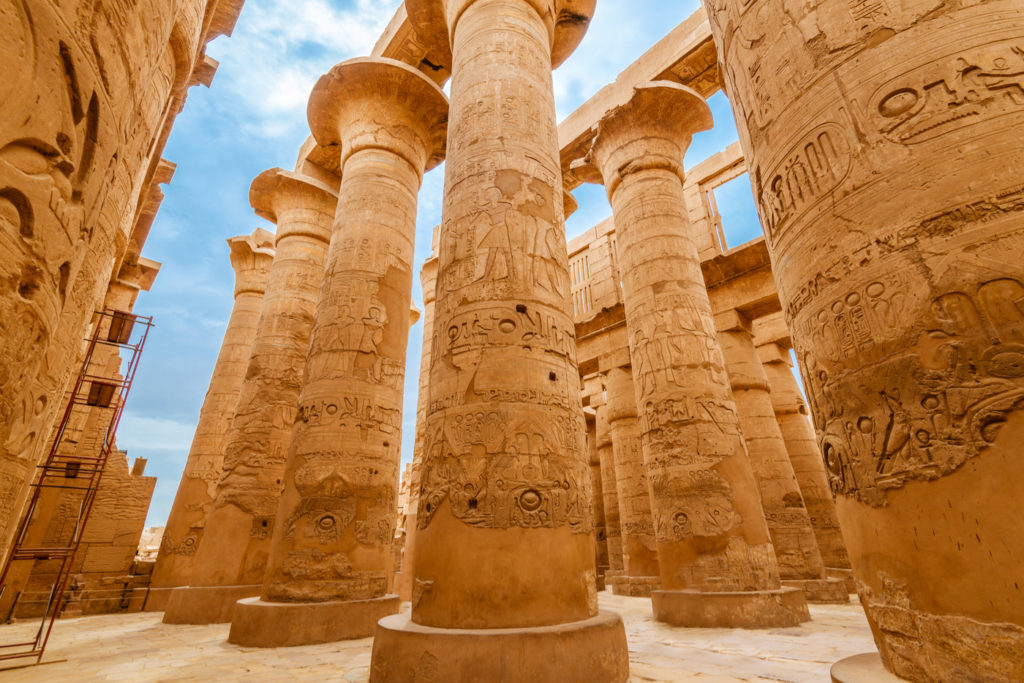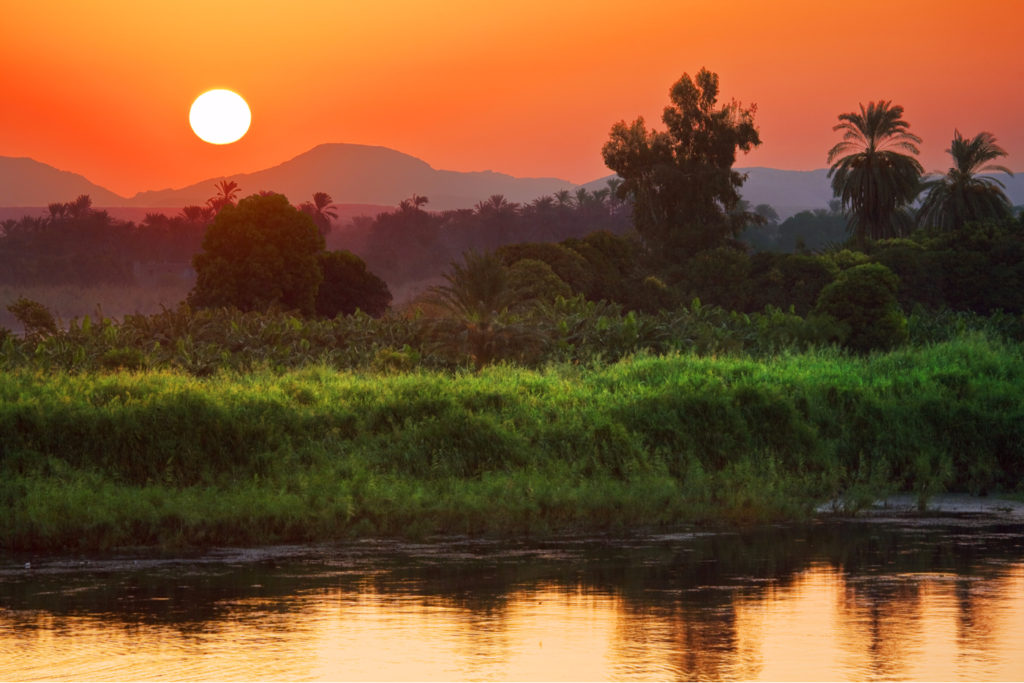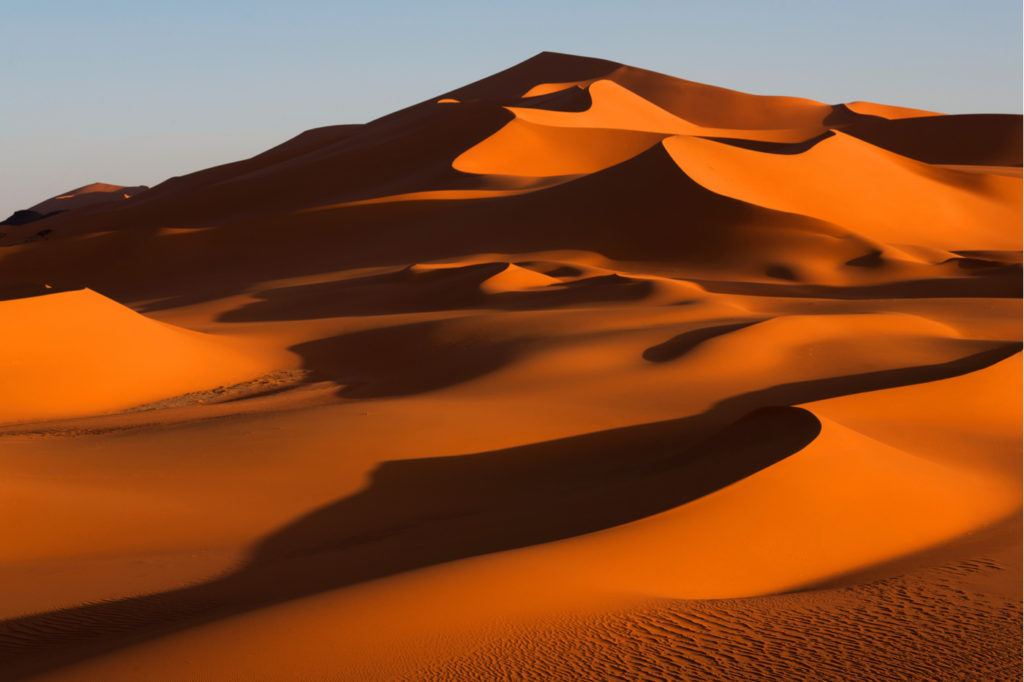7 Wonders of Egypt
The 7 Wonders of Egypt are quickly identified with the country being home to 1 of the 7 Wonders of the World, 1 of the 7 Wonders of Africa, and 2 of the 7 Natural Wonders of Africa. How could Egypt not be on the bucket list of travel countries to visit in Africa.
Although many people envision wildlife encounters when contemplating a trip to Africa, opting to travel to Egypt will not leave visitors disappointed. Cultural, historical, architectural, and nature enthusiasts will all find Egypt to be a destination filled with attractions and wonders that exceed expectations.
Here is a look at the7 Wonders of Egypt:
Giza Pyramids

The Giza Pyramids are the only remaining wonder from the original 7 Wonders of the World, and today serve as one of the current 7 Wonders of the World, and as the Ambassador Wonder to the 7 Wonders of Africa.
The Giza Pyramids are located just outside Cairo and represent an historical collection of monuments that include three main pyramids, the Great Sphinx, and a few other ancient architectural structures.
The Great Pyramid of Giza, also called the Pyramid of Khufu, is the oldest and largest of the three pyramids. It was the tallest man-made structure for over 3,800 years reaching a height of 481 feet (146.5 m). Each base side measures 755.9 feet (230.4 m) with the volume of rock estimated at 88,000,000 cubic feet (2,500,000 cu m).
The Great Pyramid of Giza is comprised of three chambers which include the King and Queen chambers located at higher elevations, the mortuary temples, and an unfinished chamber in the lower area. Easily the top destination and tourist attraction for Egypt.
Karnak Temple

The Karnak Temple complex is often referred to as Karnak. It is one of Egypt’s most popular tourist attractions coming in only second to the Giza Pyramids. The area was named after the neighboring village of El-Karnak.
The Karnak Temple complex is comprised of temples, chapels, pylons and an array of other architectural structures. There are four main areas to the complex, however only four of those are open to the public. The Hypostyle Hall in Amun-Re measures 50,000 square feet (5,000 sq. m) with 134 large columns arranged in 16 rows. The majority of the columns are 33.8 feet (10 m) with 12 of them extending to 68.9 feet (21 m).
The Precinct of Amun-Ra is the only part open to the public with the other parts of Karnak including the Precinct of Mut, the Precinct of Montu, and the Temple of Amenhotep IV. Approximately 30 pharaohs participated in the construction and use of the area. The mystery and intrigue of Karnak has been featured in a number of movies and books.
Nile River

The Nile River is the longest river in the world extending across a distance of 4,258 miles (6,853 km). This distinction earned it the designation of being one of the 7 Natural Wonders of Africa.
The Nile River traverses through 11 countries that include: Tanzania, Uganda, Rwanda, Burundi, DR Congo, Kenya, Ethiopia, Eritrea, South Sudan, Republic of Sudan, and Egypt. Egypt has the honor of serving as the mouth of the river where the Nile dumps into the Mediterranean.
The Nile is the primary water source for the country with two tributaries that feed into the Nile known as the Blue Nile and the White Nile. The Nile River covers a drainage basin of 1,256,591 square miles (3,254,555 sq. km).
The Nile River has historical relevance and value being connected to one of the most significant Biblical accounts with the history of Moses and Pharaoh.
Sahara Desert

The Sahara Desert is the largest dry and largest low-latitude hot desert in the world and accounts for 31% of the continent of Africa. Accordingly, it is one of the 7 Natural Wonders of Africa. Egypt is home to the northeastern corner of the desert.
The Sahara Desert encompasses an area that expands across 3,600,000 square miles (9,200,000 sq. km). It measures 2,983 miles (4,800 km) going east to west and stretching 1,118 miles (1,800 km) from the north to the southern border. In Egypt the desert accounts for 262,800 square miles (680,650 sq. km), which is two-thirds of the land area.
The Sahara Desert covers 10 different countries which include Algeria, Chad, Libya, Mali, Mauritania, Morocco, Niger, Sudan, Tunisia and of course Egypt. The Sahara is divided in Egypt and known as the Eastern Desert from the Nile to the Red Sea and the Western Desert from the Nile to the border of Lybia.